The best places to visit in Croatia are also some of the world’s most iconic sights, like the walled city of Dubrovnik and the vast palace built in Split by Roman Emperor Diocletian. Some locations may seem instantly familiar, as Croatia has starred in many movies and TV series.
There are also more than 1,000 miles of coastline, red-roofed medieval cities, emerald forests, pebbly beaches, and coastal mountains crisscrossed with canyons. Islands, which are the peaks of sunken mountain ranges, are scattered along the Adriatic coast.
There’s a lesser-trodden trail to explore, too. If you’re interested in nature, you’ll find hiking, kayaking, and white-water rafting. Historians can discover sleepy towns that have stood here for centuries and impressive Roman remains. And one thing’s for sure as you discover the best places to go in Croatia: you’ll never run out of beaches to enjoy.
Old Town Walls, Dubrovnik
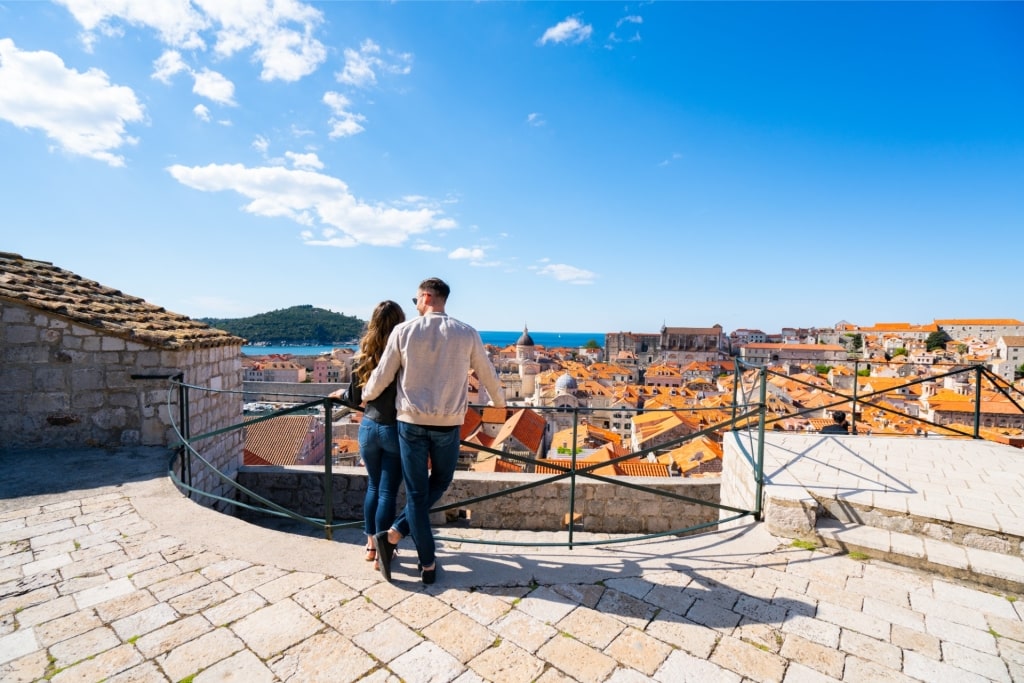
Old Town Walls, Dubrovnik
Dubrovnik’s Old Town, completely encircled by chunky ramparts, is one of the most photographed places in the world.
The walls were originally built in the 13th century to protect the city, which in those days was the heart of the self-governing republic of Ragusa. There were only two entrances, both still intact today, which were closed at night by pulling up their drawbridges.
The walls were further reinforced in the 15th century when Ragusa came under attack from the Ottomans. Many of the cannons from this era are still present and point out to sea. Astonishingly, the walls survived a catastrophic earthquake in 1667 that all but destroyed the city.
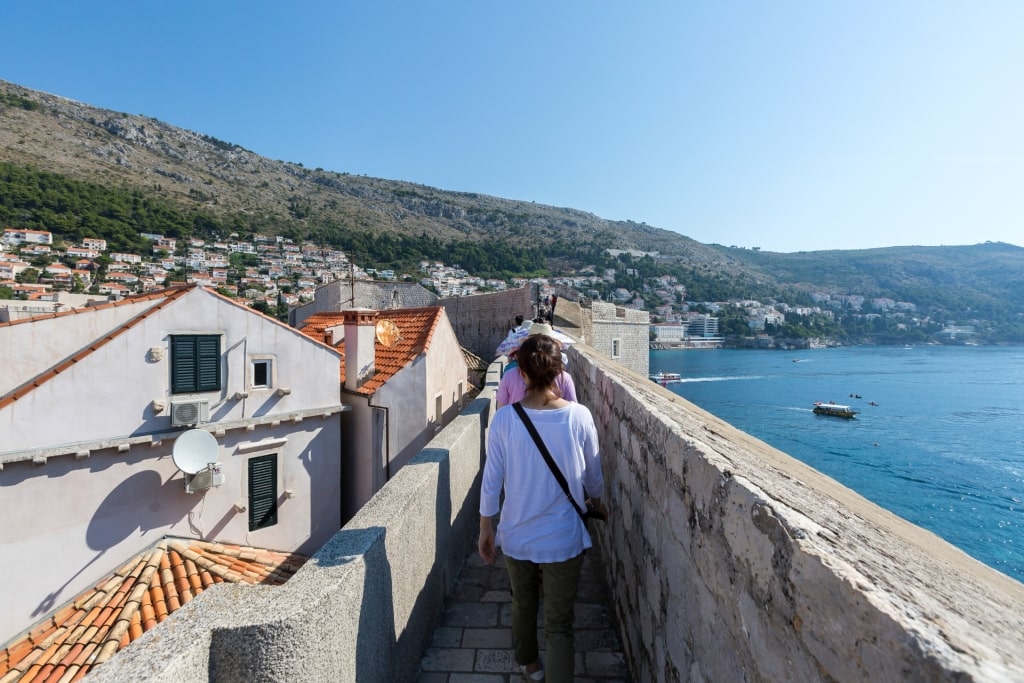
Old Town Walls, Dubrovnik
Most everything you’ll want to see in the Old Town, or Stari Grad, which means “old town” in Croatian, is enclosed within the walls.
But to get perspective on the palaces, squares, bell towers, and terracotta rooftops, the best thing to do in Dubrovnik is to walk the 1.25-mile circuit around the ramparts, starting near the Pile Gate. Tickets are restricted to avoid overcrowding, so be sure to book in advance—and bring water on a hot day as there’s no shade.
Paklenica National Park
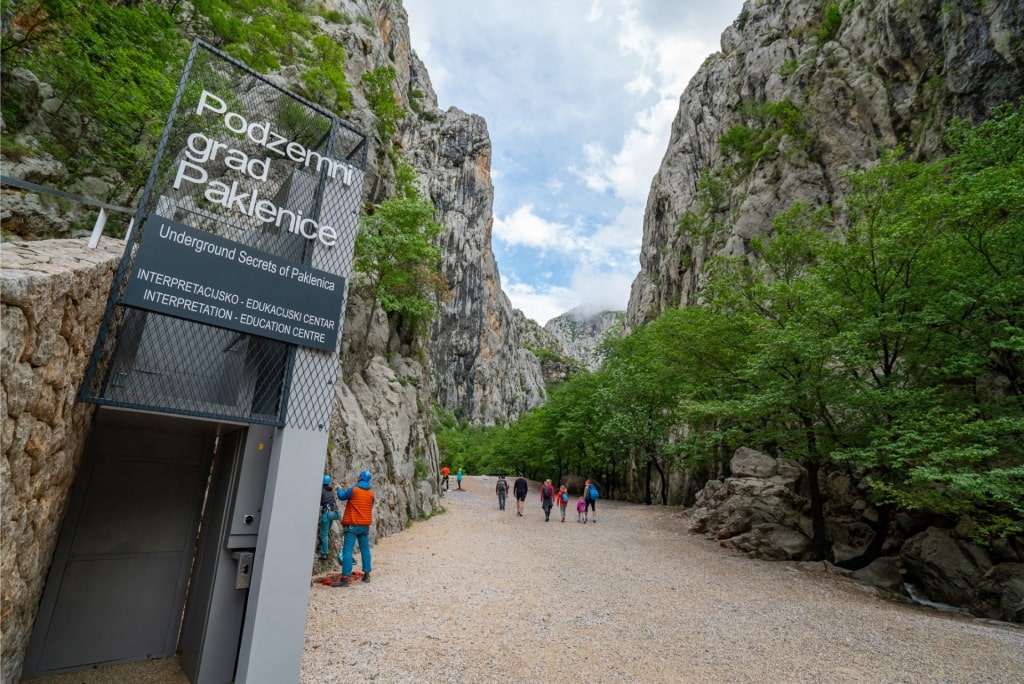
Paklenica National Park
An easy day trip from Zadar, Paklenica National Park is a landscape of sheer-sided canyons, plunging cliffs, and rushing rivers. This national park is one of the most popular places near Zadar for hiking and rock climbing.
Join a guided hike through beech and pine forests to gaze at two of the most dramatic canyons, Velika Paklenica and Mala Paklenica, with 1,200-foot cliff walls. Look out for golden eagles and peregrine falcons which nest in the gorges, and chamois, a small antelope common to the region.
Diocletian’s Palace, Split
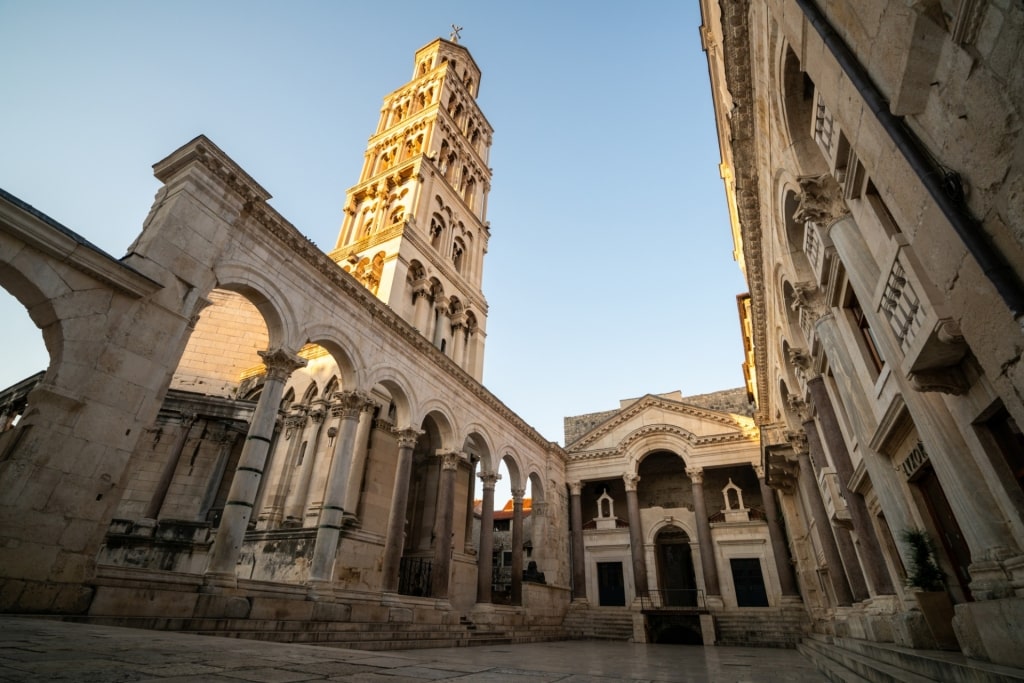
Diocletian’s Palace, Split
Diocletian’s Palace, which dominates the center of Split, is one of the best-preserved Roman structures in the world and one of the best places to visit in Croatia. It’s all the more impressive as it’s a living city with shops, apartments, and restaurants. Some 3,000 people live here in what’s considered prime real estate.
The palace in Split’s Old Town was built in 4AD as a summer villa for the Emperor Diocletian, as well as a military base. No expense was spared in the elaborate columns and arches, temples, towers, and the gleaming white stone brought from the island of Brac.
Take your time to wander around, stopping to admire the elaborate construction. Although it’s fascinating to see how people live today within the palace walls, one of the most atmospheric parts is the substructure, for which you need a ticket.
Walk around these echoing chambers with their vaulted ceilings and picture how boats would arrive from across the seas and directly unload their cargoes of luxury goods for the emperor and his retinue. There’s an old wine press and an olive press down here, too.
Stradun, Dubrovnik
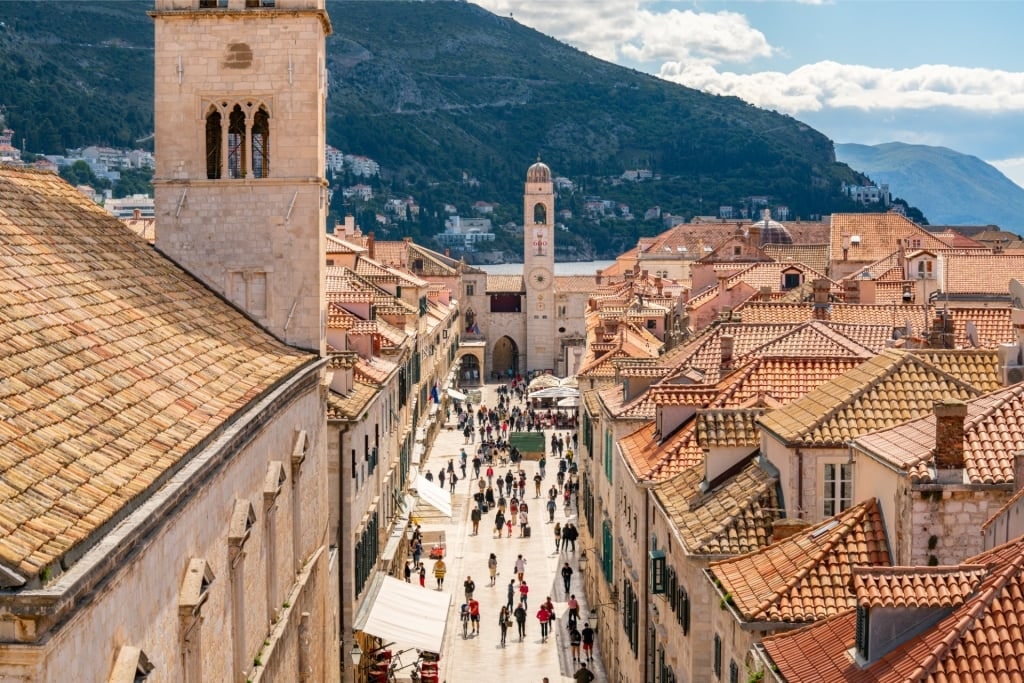
Stradun, Dubrovnik
Stradun, or Placa, is the main thoroughfare in Dubrovnik’s Old Town. Stretching from the Pile Gate to the Ploče Gate, it’s a vision in gleaming white limestone. Baroque palaces line the boulevard, adding to the grandeur. Stroll along this elegant street and you’ll get a feel for the wealth and splendor of this medieval city.
Tiny, shaded alleyways lead off the main stretch, each lined with cafés and restaurants serving authentic Croatian food. Locals have their favorites, and you’ll see people lingering over coffee or a meal at any time of day.
They are practicing the Croatian art of fjaka, which means doing very little at all in order to achieve a state of happy relaxation. Follow their example and sit down for coffee; you will never see Croatians carrying take-out cups in the streets.
Trogir, near Split
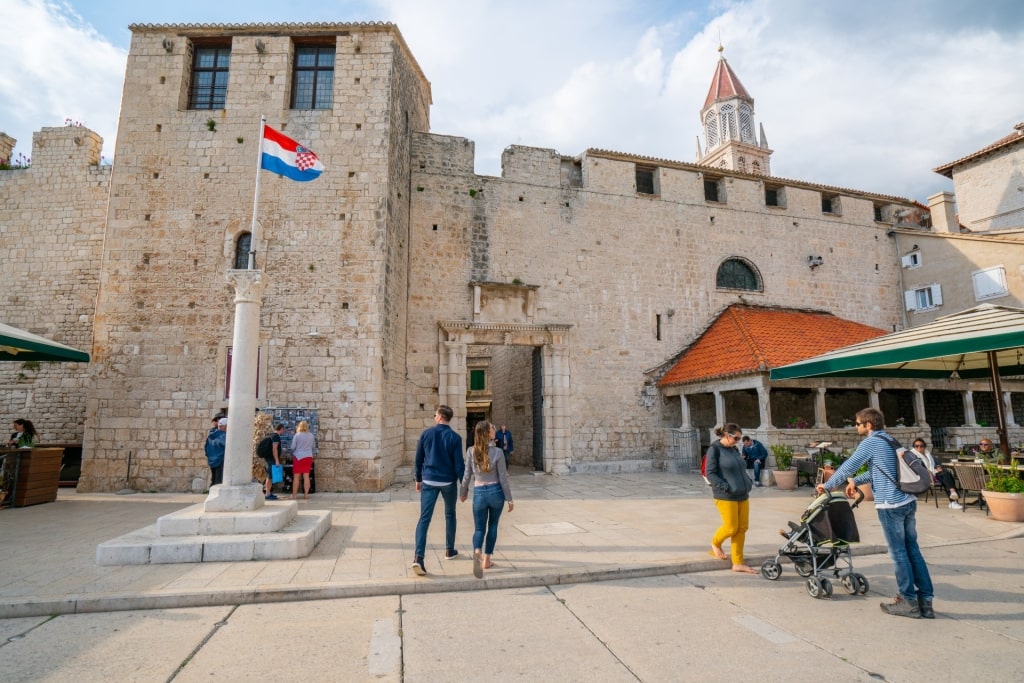
Trogir, near Split
Trogir is an enchanting walled town close to Split, set on a tiny island wedged like a pebble between the mainland and the island of Ciovo, with bridges connecting all three.
The town is protected as a UNESCO World Heritage Site thanks to its remarkable collection of beautifully preserved buildings. Romanesque churches and palaces and Baroque and Renaissance mansions date back to the period when this region was controlled by the Venetians.
Wander through the maze of gleaming alleys, gazing up at the old buildings, and then head to the waterfront, which is crammed with yachts in summer. Sip a glass of local white while snacking on a platter of Dalmatian ham and cheese, the classic Croatian lunch.
Read: Best Beaches in Split
Krka National Park
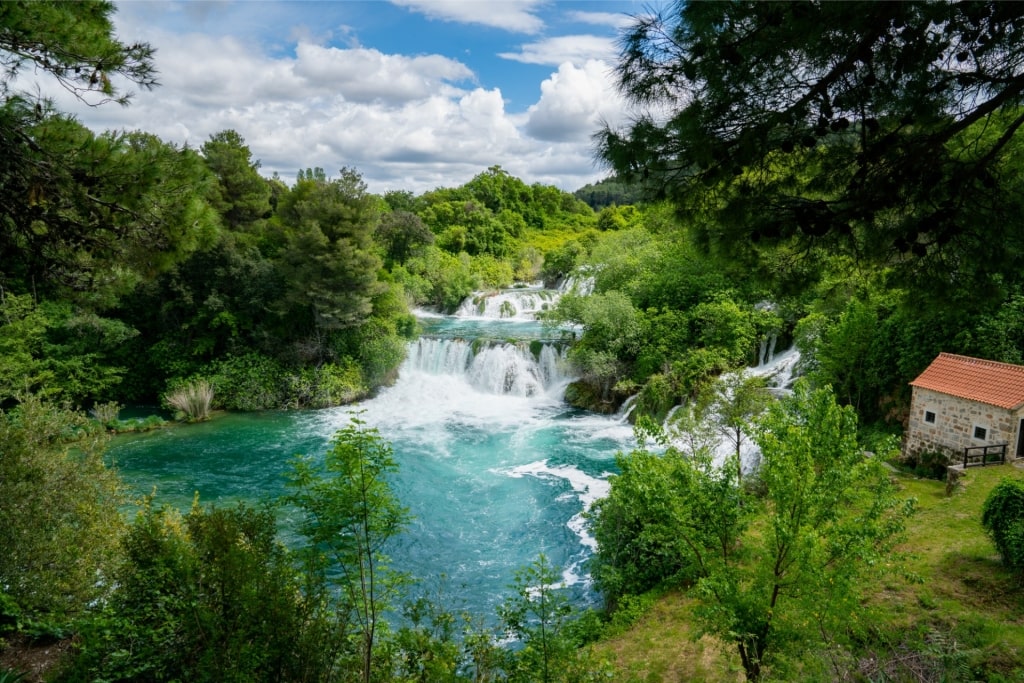
Krka National Park
The Krka River makes its way from the mountains of Croatia’s interior to the coast, with some 43 miles of its length protected as a national park. This magical region, one of the best places to visit in Croatia, is filled with tumbling Croatian waterfalls, emerald forests, rocky canyons, and wildlife, including birds, mammals, and reptiles.
Arguably the most beautiful part of the park, and one you’ll recognize from many photographs, is the Skradinski Buk Waterfalls. Here, the river tumbles over a series of travertine rock shelves into a blue-green pool surrounded by forest.
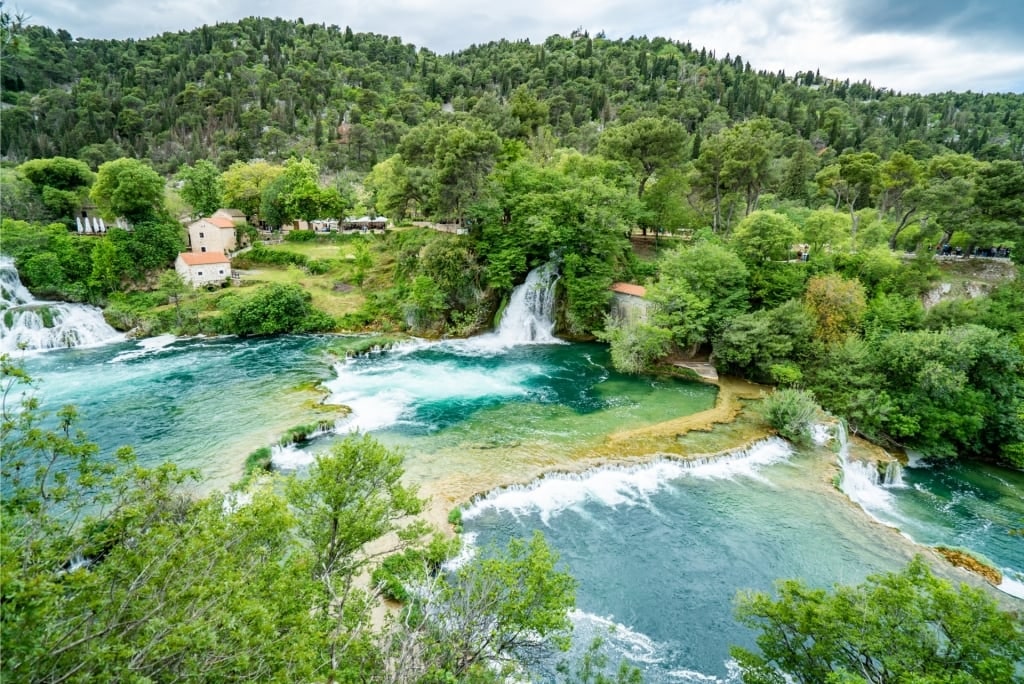
Krka National Park
You’ll emerge into this fairytale setting after an hour-long ramble through the forest over wooden boardwalks with the sound of birds singing and frogs croaking. There’s no swimming in the pool, but you can cool your feet off on a hot day in some of the surrounding streams.
As part of this walk, you’ll also visit an old watermill. The surrounding cluster of cottages has been converted into artisan studios and craft shops.
Onofrio’s Fountain, Dubrovnik
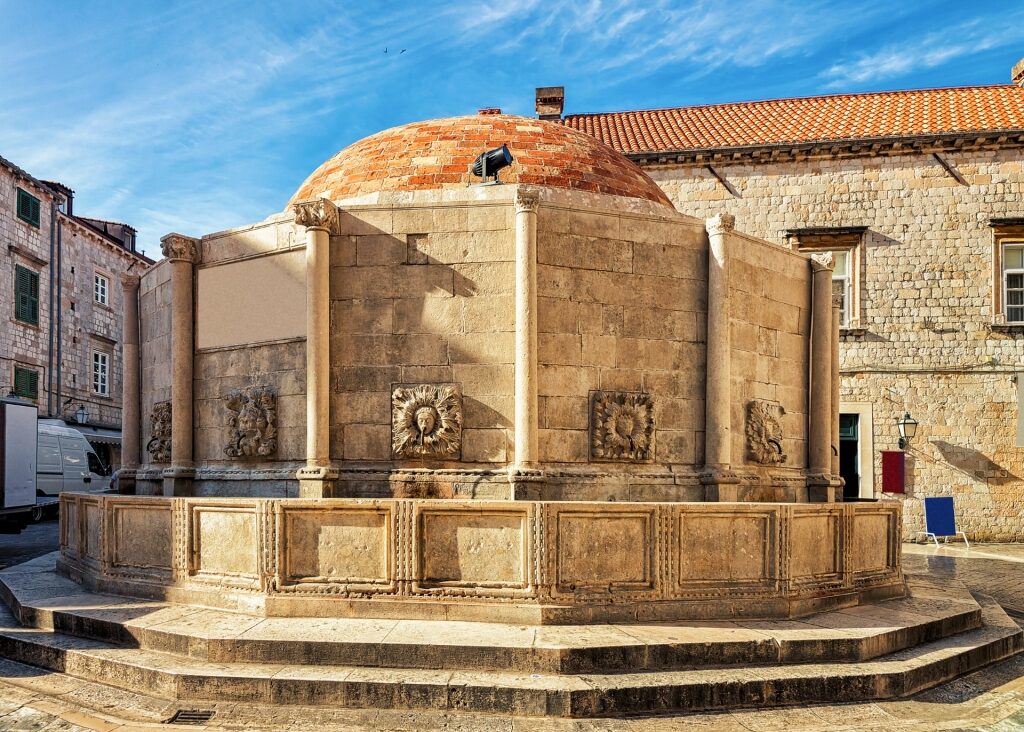
Onofrio’s Fountain, Dubrovnik
The large, circular Onofrio’s Fountain lies at the top of Stradun, just inside the Pile Gate, one of the main entrances to the city. It’s an impressive piece of engineering built in 1438 to bring water to this Mediterranean city from a spring some seven miles away, decorated with elaborately carved faces from which water spurts.
While in town, do as the locals do and fill your water bottle from the fountain rather than buying water in plastic bottles. It’s cool and delicious.
There’s a second fountain, also called Onofrio, at the opposite end of Stradun.
Ston, near Dubrovnik
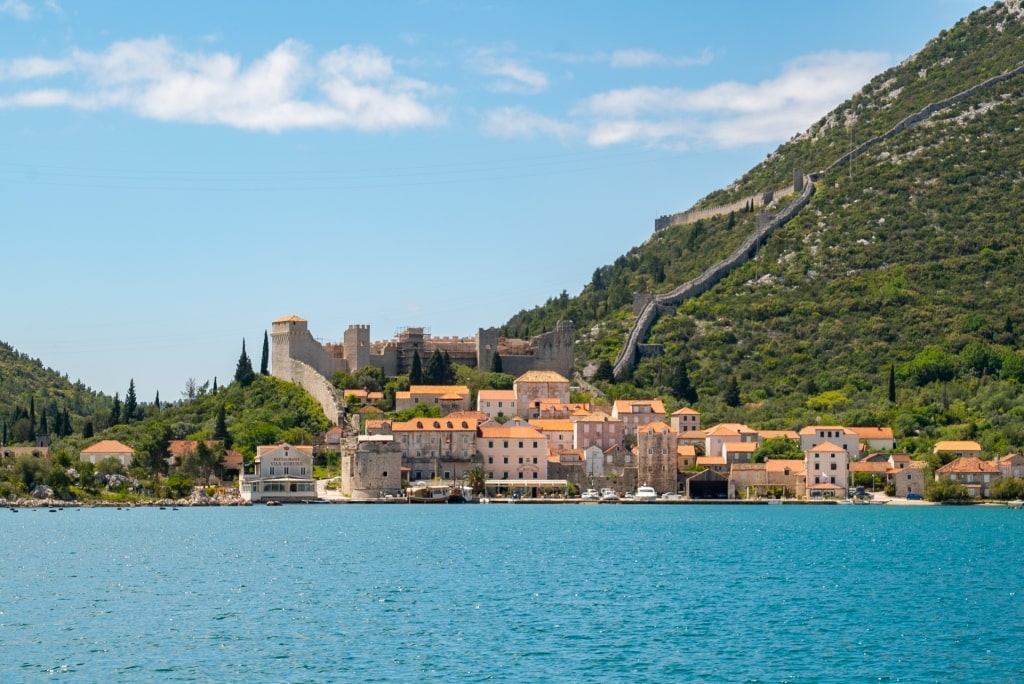
Ston, near Dubrovnik
Given how fascinating it is, the town of Ston, on the Peljesac Peninsula near Dubrovnik, is astonishingly under the radar.
Ston has many claims to fame. Its fortifying walls, which snake over the scrubby hillsides, are far longer than those of Dubrovnik; at more than three miles, they’re actually the longest in Europe.
The walls were built to protect the area’s salt pans, which in the 14th and 15th century were extremely valuable; it was salt that was a major contributor to Dubrovnik’s wealth. You can walk the section between Ston and Mali Ston, a smaller seaside village, in about 45 minutes, although you’ll need a lot of water on a hot day as there is no shade.
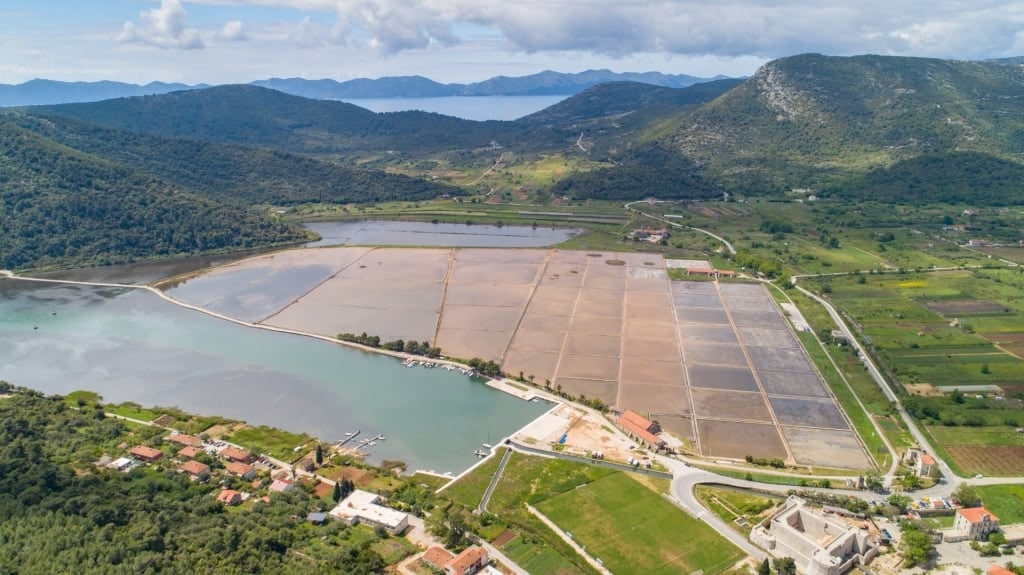
Ston, near Dubrovnik
The salt works are still here, shimmering in the heat. A pack of salt from Ston is a fun souvenir to take home.
Another highlight of this unassuming town are its oysters. Ston is one of the best places to go in Croatia if you love shellfish. The sea around Mali Ston is peppered with oyster beds, and local outlets sell the delicacy at bargain prices.
Zadar Old Town
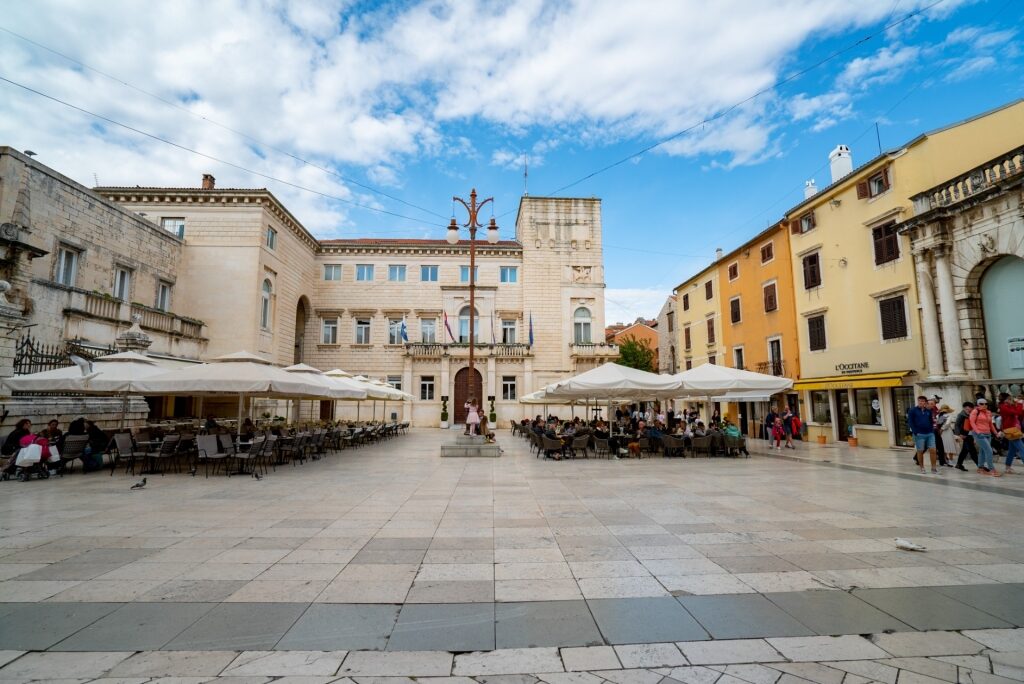
Zadar Old Town
The underrated city of Zadar is a buzzing commercial port and yachting base. It’s the gateway to the sun-bleached Kornati Islands, scattered across the steely-blue Adriatic a few miles offshore. The center is filled with shops, market stalls, and outdoor cafés in sunny squares.
Explore the old town, which is dotted with Roman remains. The most impressive collection is at the Roman Forum, next to St. Donatus Church. This grassy area is filled with temples, columns, and statues dating back as far as the first century BC when it was a busy gathering place.
Here, you can see altars that were used for sacrifices in the remains of a temple dedicated to Jupiter, Juno, and Minerva, as well as a pillar used centuries later in the Middle Ages to chain up and publicly shame criminals.
The Church of St. Donatus is highly unusual, dating back to the ninth century and circular in design. Today, it’s used as a concert venue.
Dominican Monastery, Dubrovnik

Dominican Monastery, Dubrovnik
One of the best places to visit in Croatia is the Dominican Monastery, dating back to the 13th and 14th centuries and combining Romanesque, Gothic, Baroque, and Renaissance styles of architecture. The cloister is particularly beautiful, green, and lush, fragranced with orange trees.
You can visit the small museum, which displays chalices, gold jewelry, paintings, and medical books. Make time for the pharmacy, one of the oldest in Europe, filled with fascinating equipment and potions. The locally made face and body creams, made with organic, locally grown ingredients, make great gifts to take home—you won’t see them anywhere else.
Sibenik
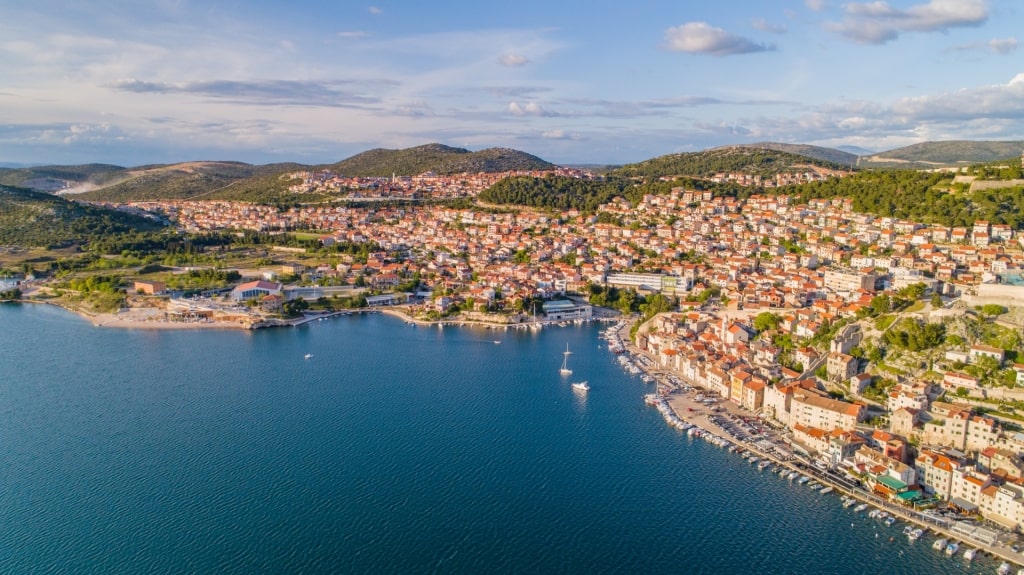
Sibenik
Somewhat overshadowed by showy Split and buzzing Zadar, the town of Sibenik, spread along a protected bay, claims two UNESCO World Heritage Sites.
One is the Cathedral of St. James, a Gothic-Renaissance confection in gleaming white, built from limestone and marble from nearby Brač island, which also supplied the stone for Diocletian’s Palace.
The cathedral took more than 100 years to build and was consecrated in 1555. Check out the frieze of 71 heads at the rear of the building. These were nobles and wealthy citizens of Sibenik in the 15th century. The more tight-fisted the individual in donating funds for the construction of the cathedral, the bigger and less flattering the portrait.
The second UNESCO site is St. Nicholas Fortress, which guards the narrow channel through which Sibenik is accessed. The fortress was built in the 16th century to defend the channel, and therefore the town, from attacks by the Turks.
Fort Lovrijenac, Dubrovnik
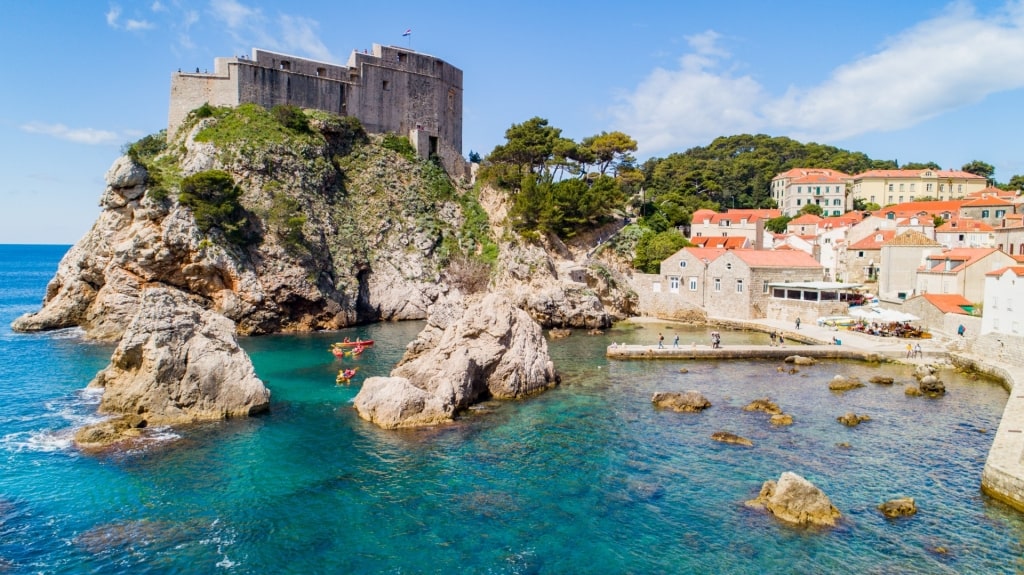
Fort Lovrijenac, Dubrovnik
One of the most beautiful places in Croatia, Fort Lovrijenac lies just outside the city walls. It seemingly blends into the sheer, 121-foot cliff on which it stands, its walls high and impenetrable.
The fort, the name of which translates as St. Lawrence’s Fortress, was built around the early 14th century. Its role was to defend Dubrovnik from the sea and protect the Pile Gate, one of the main entrances to the city.
Today, its role is both a filming location and the backdrop for Dubrovnik’s Summer Festival, where Shakespeare’s plays are staged, attracting world-famous actors.
You can climb up to the top to take in magnificent views from the battlements of the red rooftops and walls beneath you—this is where to go for one of the best shots of the old city.
Salona, near Split
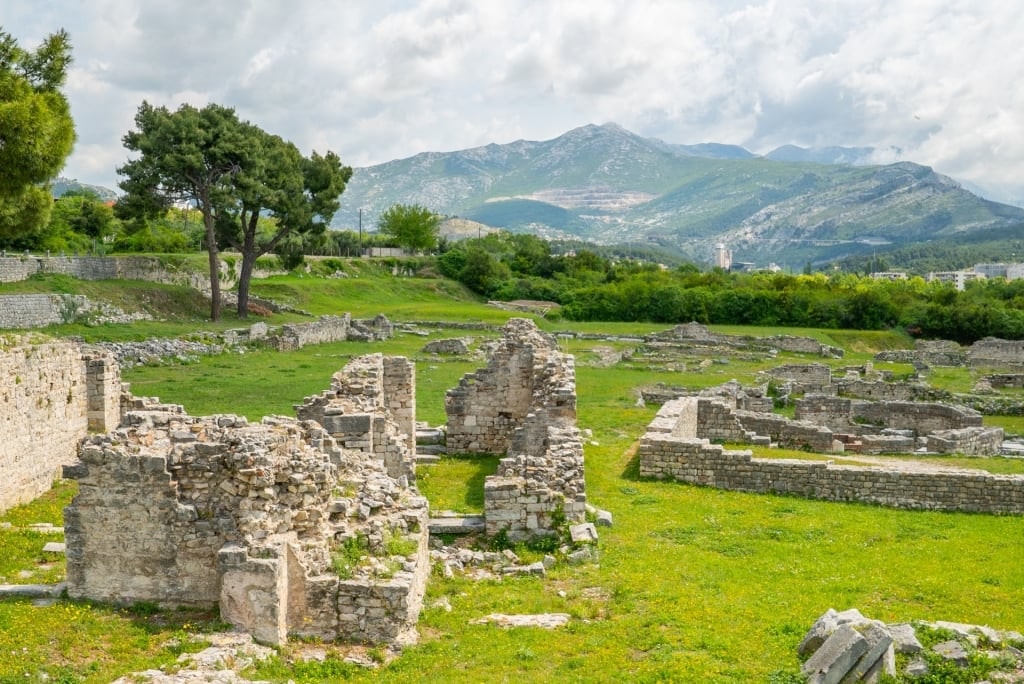
Salona, near Split
Lying to the northeast of Split, ruined Salona is the most important archaeological site in the region and is one of the best places to visit in Croatia for historical interest. It was the proximity of Salona that persuaded Emperor Diocletian to build his summer palace in Split.
There has been a settlement here since 119 BC, which was taken over by the Romans in 78 BC to serve as the administrative headquarters of Dalmatia. At one point, some 60,000 people lived in the city, enjoying luxuries including an amphitheater seating 17,000 and sophisticated public baths.
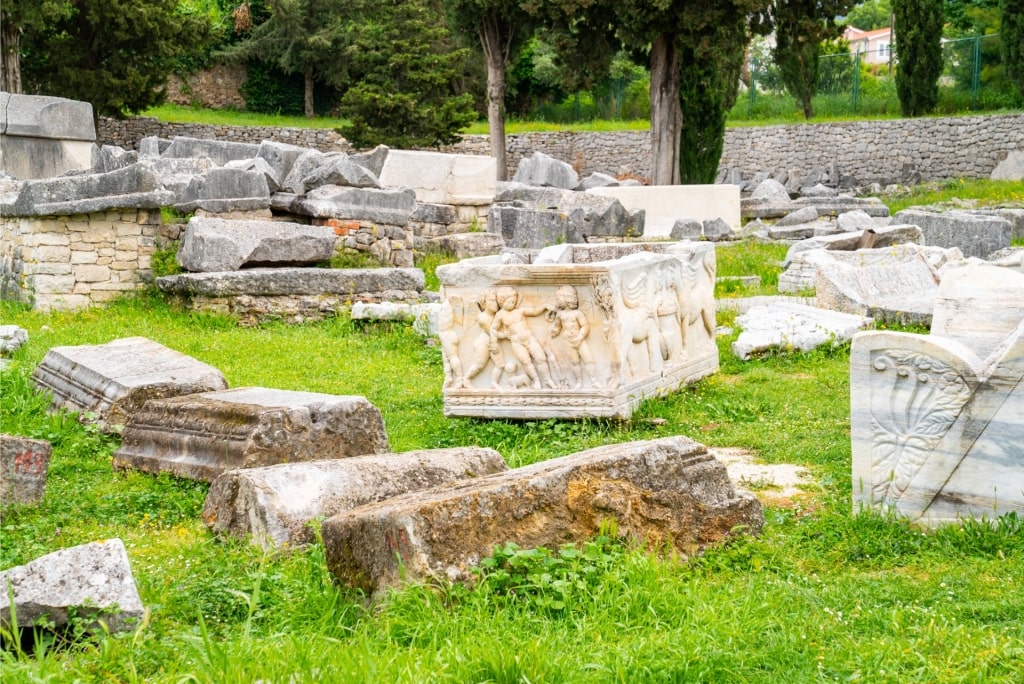
Salona, near Split
But in the seventh century, Salona was destroyed by marauding tribes, causing the residents to flee to the islands and Split. Since then, the site has been untouched. It’s wonderfully atmospheric, sprawling across a hillside and dotted with olive and cypress trees.
Only 15 percent has been excavated so far. You’ll see the amphitheater, the necropolis, the remains of elaborate villas, and part of the basilica, which dates to the fifth century. Sarcophagi are scattered around, and you can see the remains of the old city gates and an aqueduct that is believed to have supplied Split with fresh river water.
Church of Saint Blaise, Dubrovnik
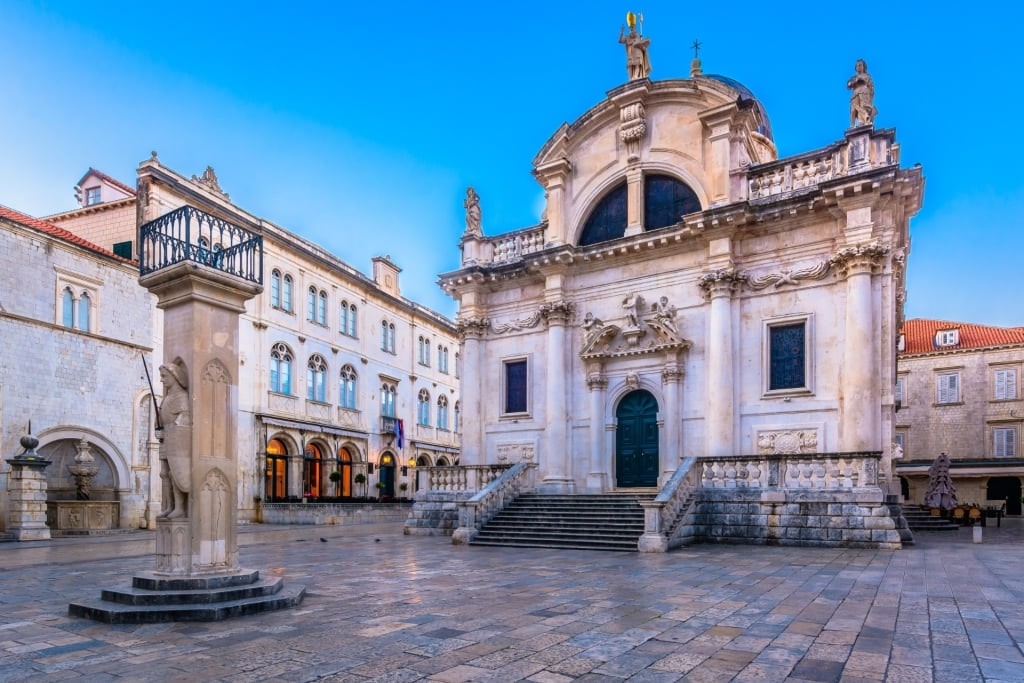
Church of Saint Blaise, Dubrovnik
You’ll see a lot of references to St. Blaise in Dubrovnik. St. Blaise has been the city’s patron saint since the tenth century. He is said to have protected the people of Dubrovnik from invading Venetians, who dropped anchor in the port of Gruž with a secret plan to attack the city.
St. Blaise, an old, bearded man with a bishop’s miter and a stick, alerted the local priest to the danger, and the city was able to defend itself.
The original 14th-century Romanesque church that stood on this site was destroyed by fire in 1705. Everything was obliterated, but what the locals believed was a miracle took place. A silver statue of St. Blaise, holding a model of Dubrovnik in his hand, was the only item to be retrieved from the ashes.
A new church was built in 1715 in the flamboyant Venetian Baroque style in honor of the saint, which now houses the original statue. It’s fascinating to look at the model of the city as it shows the layout and appearance of Dubrovnik before the devastating earthquake of 1667.
Sponza Palace, Dubrovnik
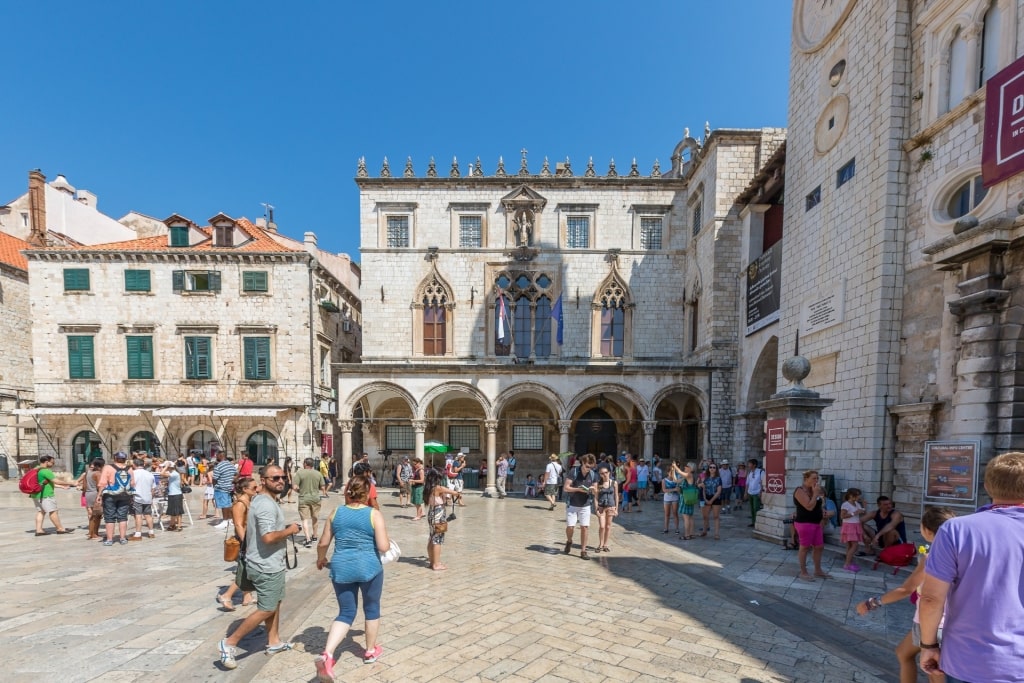
Sponza Palace, Dubrovnik
The grand Sponza Palace, located on the Stradun and built in Renaissance and Gothic styles, once served as the city’s customs house. It was built in the 16th century and survived the great earthquake of 1667, going on to house a mint and an armory. In its heyday, the palace was a lively commercial center.
Today, the Dubrovnik Archives are kept here, although these documents are not accessible to the public. You can see some replicas on the ground floor, dating back 1,000 years. There’s also a photographic display paying tribute to the Defenders of Dubrovnik, men who gave their lives in the Balkans conflict of 1991-95.
Rector’s Palace, Dubrovnik
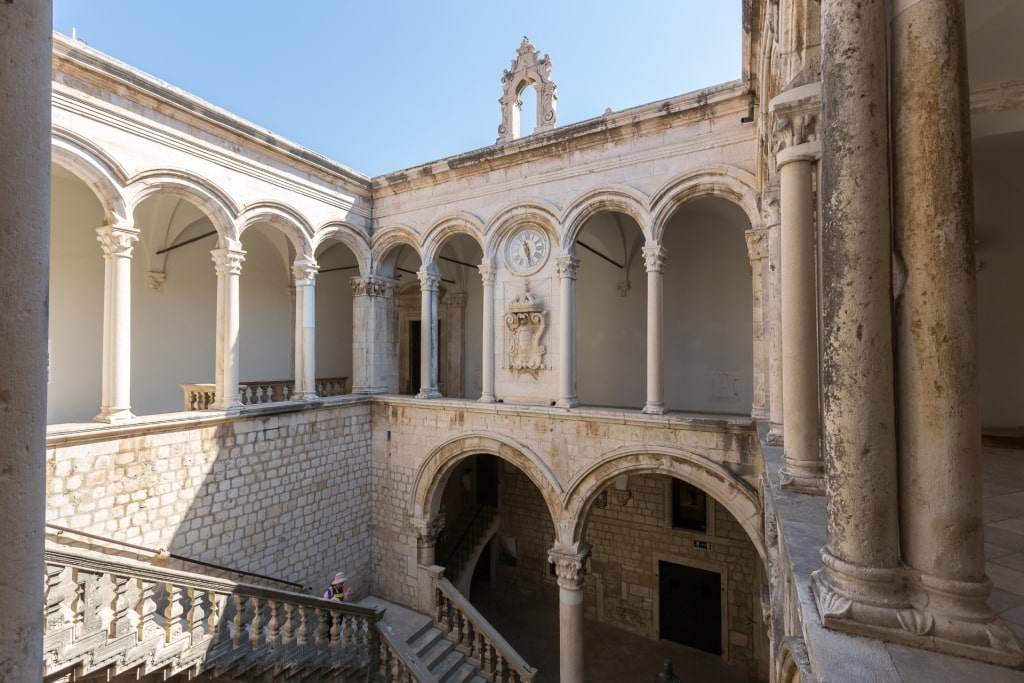
Rector’s Palace, Dubrovnik
In the time of the republic of Ragusa, a local would be selected to act as Rector, living in the upper apartments of the Rector’s Palace, a Gothic-Renaissance structure built in the 15th century. Each Rector would only be in residence for one month to avoid any individual assuming too much power.
The palace, which lies at the end of Stradun, also housed the city’s courtroom, prisons, and arsenal. Nowadays, it’s the home of the Cultural History Museum, where you can get a glimpse into the lavish lifestyle of the rectors, complete with ornate furniture, oil paintings, elaborate clothing, and weapons.
Srd Hill, Dubrovnik
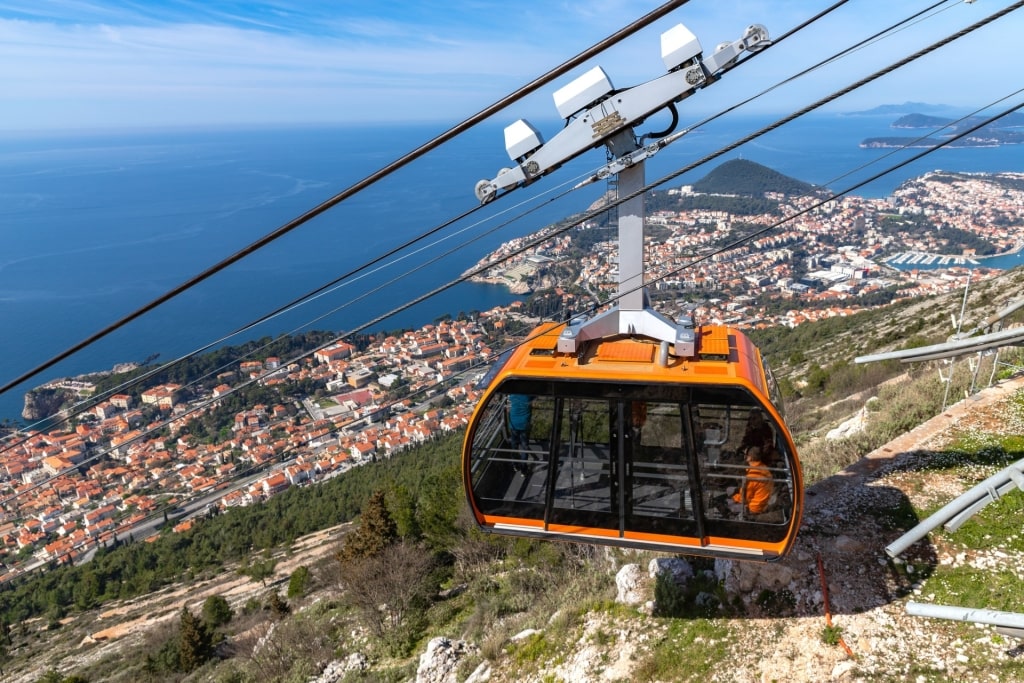
Srd Hill, Dubrovnik
Srd Hill rises up behind Dubrovnik. It’s from here that you’ll get that dream shot of the old city, its terracotta roofs glowing in the sun, hemmed in by the walls, the Adriatic sparkling beyond. Ride up in the cable car, and on the way back, ride the cable car back down or follow the easy walking trail. There’s also a restaurant at the top where you can enjoy lunch with a view.
There are things to see once you’ve admired the vistas. The Homeland War Museum is housed in the old Fort Imperial, which is packed with news footage, photos, and documents from the Balkans conflict of 1991-95. This is a war that’s still very recent in the minds of the locals who lived through it and later helped to rebuild a shelled-out Dubrovnik.
You could also take a buggy safari, bumping around mountain-top and off-road trails, stopping to admire the views as you learn about the role Srd Hill played in the war.
Cathedral of St. Anastasia, Zadar
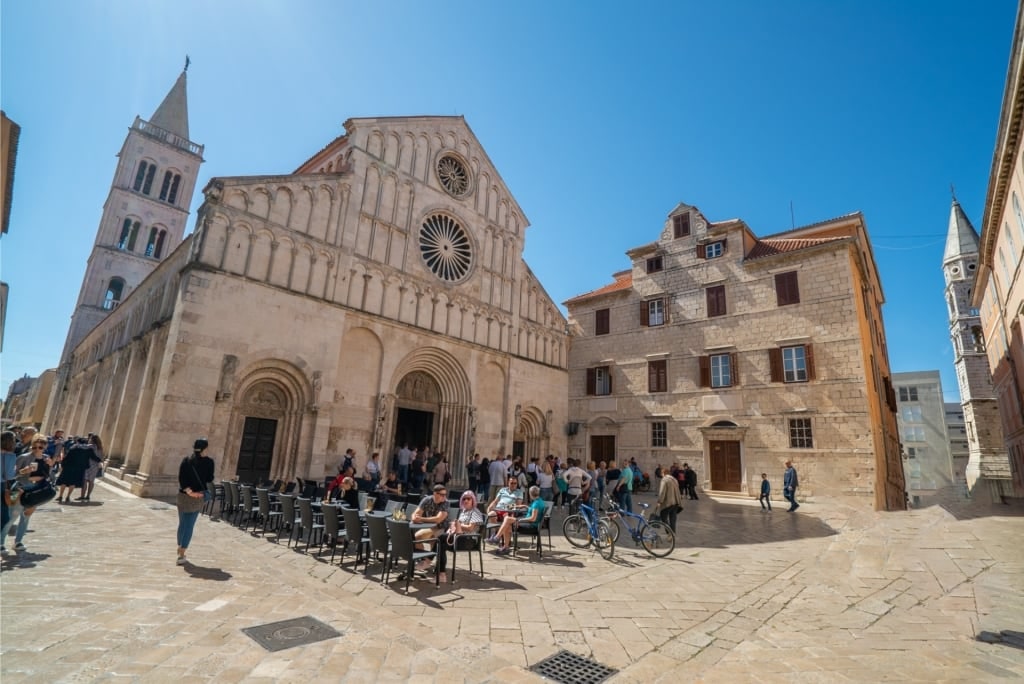
Cathedral of St. Anastasia, Zadar
Zadar’s hulking cathedral, the largest in the Dalmatian region, sits on multiple layers of history. A Christian basilica existed on this site in the fourth and fifth centuries, covered by the original cathedral between the ninth and 11th centuries. Another iteration was built in the 12th and 13th centuries in the Romanesque style but was almost destroyed in World War II.
Since then, St. Anastasia has been completely restored in its original style. The relics of the saint, a fourth-century martyr venerated as a healer and exorcist, are contained in a marble sarcophagus.
Look at the choir stalls, which are exquisitely carved, and gaze up at the soaring ceiling. Make time, as in any Croatian city, to climb the bell tower for wonderful views over this Eastern European city. You’ll get a better perspective on the layout of the Roman Forum below from here, too.
Banje Beach, Dubrovnik
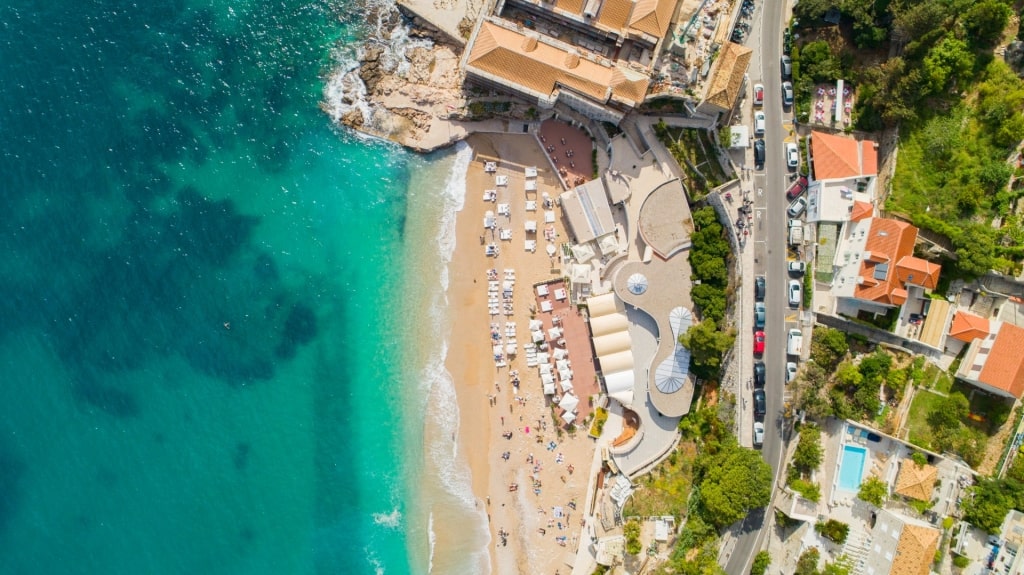
Banje Beach, Dubrovnik
Dubrovnik is one of the best beach destinations in Europe. Just outside the walls of the Old Town, Banje Beach is the most convenient spot for cooling off after wandering around the city. It’s a public beach with loungers to rent and a café selling drinks and snacks.
Admire the beautiful views across the water to the forested island of Lokrum, the city’s ramparts, and the fishing harbor. Like most of Dubrovnik’s beaches, Banje is pebbly, so the water is beautifully clear. You can join a kayaking trip here that takes you around the city in the shadow of the ramparts, which look all the more impressive as you gaze up at them from the water.
Marjan Forest Park, Split
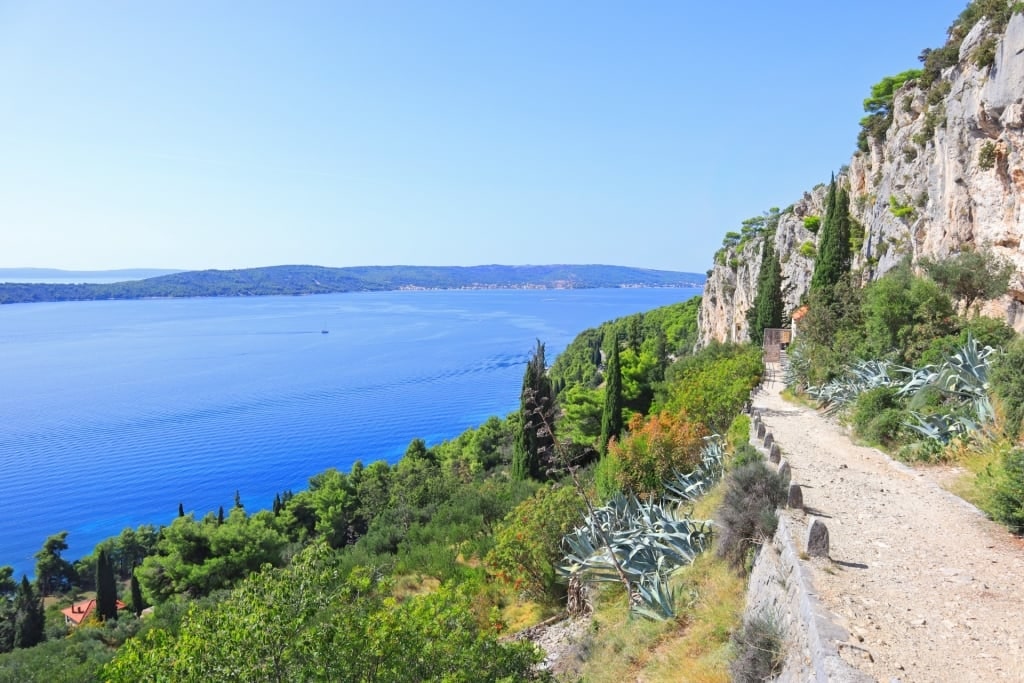
Marjan Forest Park, Split
If you’ve explored Diocletian’s Palace and want to get away from the bustle of the city, consider a gentle hike up Marjan Hill, which overlooks the western reaches of Split.
Protected as a nature reserve, this pine-forested hill is laced with walking trails and viewpoints facing the islands scattered just offshore and the city spread out below. You’ll find a 16th-century Jewish cemetery up here, too, as well as ancient cave homes.
Read: Best Things to Do in Split
Cetina River, near Split

Cetina River, near Split
One of the best places to visit in Croatia for outdoor adventure is Cetina Valley Nature Park, near Split. Here, the Cetina River funnels through a narrow gorge on the final stages of its journey to the sea, which it meets in the town of Omiš.
Join a half-day white water rafting tour to take in the beautiful limestone scenery of gorges and mountains, the river banks lined by lush greenery. You’ll be kitted out in safety gear and then take off to shoot several sets of rapids, rated as suitable for beginners and all age groups.
There are long periods of blissful calm, drifting through the gorge, on an overall journey of nearly seven miles. You’ll have multiple opportunities to stop and swim along the way, too.
St. Lawrence’s Cathedral, Trogir

St. Lawrence’s Cathedral, Trogir
Trogir has many exquisite buildings, but its Venetian cathedral is arguably the most impressive. St. Lawrence’s was built over a long period between the 13th and 15th centuries with different parts reflecting different eras. The cathedral is also dedicated to St. John, patron saint of Trogir, who is buried here.
Work began in the 13th century, with much of the building in Romanesque style. Take time to look at the main door, which is framed by astonishingly detailed carvings, including depictions of Adam and Eve standing on lions. Inside, the detail is just as impressive and contains valuable reliquaries.
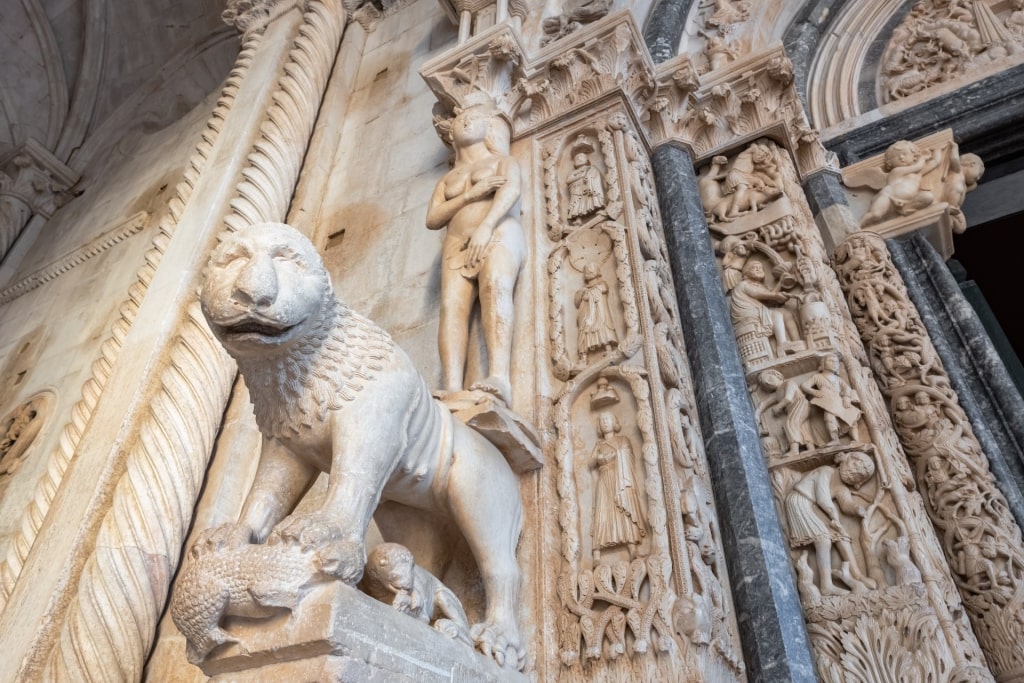
St. Lawrence’s Cathedral, Trogir
One of the most distinguishing features of the cathedral is the bell tower, the construction of which began in the late 14th century. The different levels reflect different eras of decoration, from early Gothic on the first level to floral Venetian Gothic on the second and Renaissance touches on the upper level. A metal ball on top of the pointed terracotta roof of the tower contains relics of the various saints who watch over the city.
It’s always fun to climb the bell tower in any Croatian town. If you have a head for heights and the energy to make it up the steps, you’ll be rewarded with sweeping views of the rooftops below and the sparkling Adriatic beyond, boats traveling back and forth to the islands.
Lokrum Island, Dubrovnik
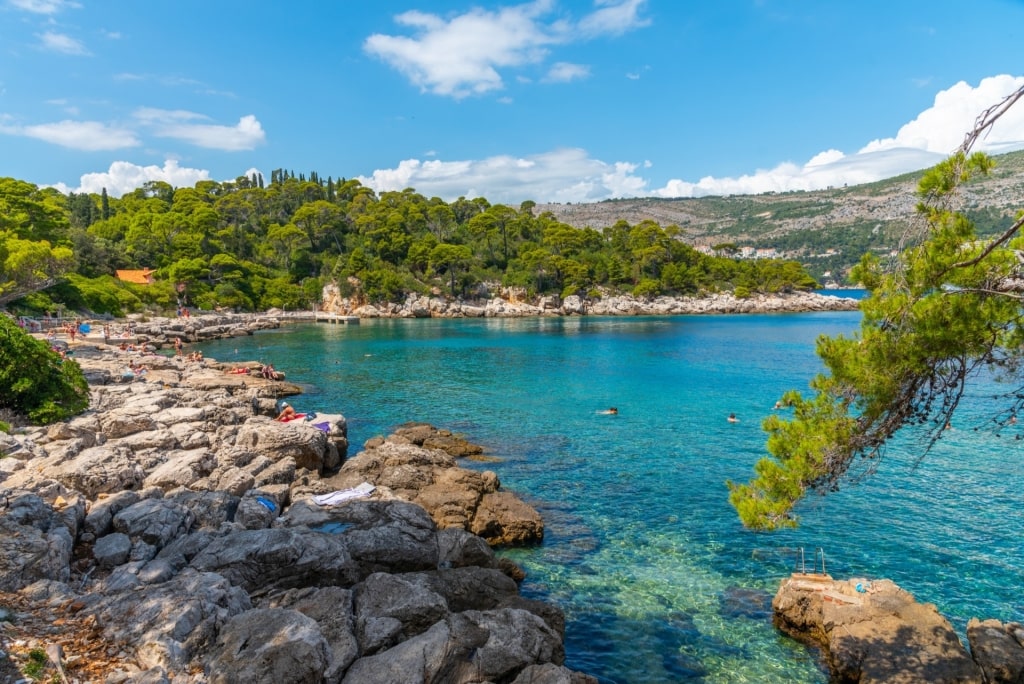
Lokrum Island, Dubrovnik
Forested Lokrum is an easy getaway from Dubrovnik if you’re looking for some peace and quiet on a hot day and a chance to jump off the rocks into the cool Adriatic.
Ferries buzz back and forth from the city harbor all day long, departing on the half-hour in July and August. The journey only takes 10 minutes.
Once you’re there, explore the landscape where Richard the Lionheart is said to have been shipwrecked in 1192 on his way home from the Crusades. A church has stood here since the 11th century. The ancient olive grove, a Benedictine monastery dating to the 15th century, and some of the ornamental gardens remain. There’s also a restaurant on the site.
You can follow walking trails through the shade of the pine and evergreen oak forest, the scent of Mediterranean herbs on the breeze. There’s swimming in the warm salt lake at the southern end of the island or from the shoreline, although if you see signs for “FKK” this means the beach is clothing optional.
Pag Island, near Zadar

Pag Island, near Zadar
In Croatia, it’s fun to get out of the cities and take in the slower pace of life on some of the islands. The barren island of Pag, connected by a bridge to the mainland, is famed for its beach scene and nightlife. However, in the quiet island capital of Pag, lace production is more a feature than nightclubs.
Here, you will see women sitting in shaded studios, engrossed in this delicate process, which dates back to the 15th century.
Learn more about this ancient technique and its role in local culture at the Pag Lace Gallery, housed in the Ducal Palace. You can also wander around the little town, admiring the medieval architecture and the Baroque flourishes on some of the buildings.
Pag also has other claims to fame. It’s Croatia’s most important salt-producing area. It’s also known for its succulent lamb, which you’ll see spit-roasted in local restaurants, as well as its salty cheese and brandy.
Sea Organ, Zadar
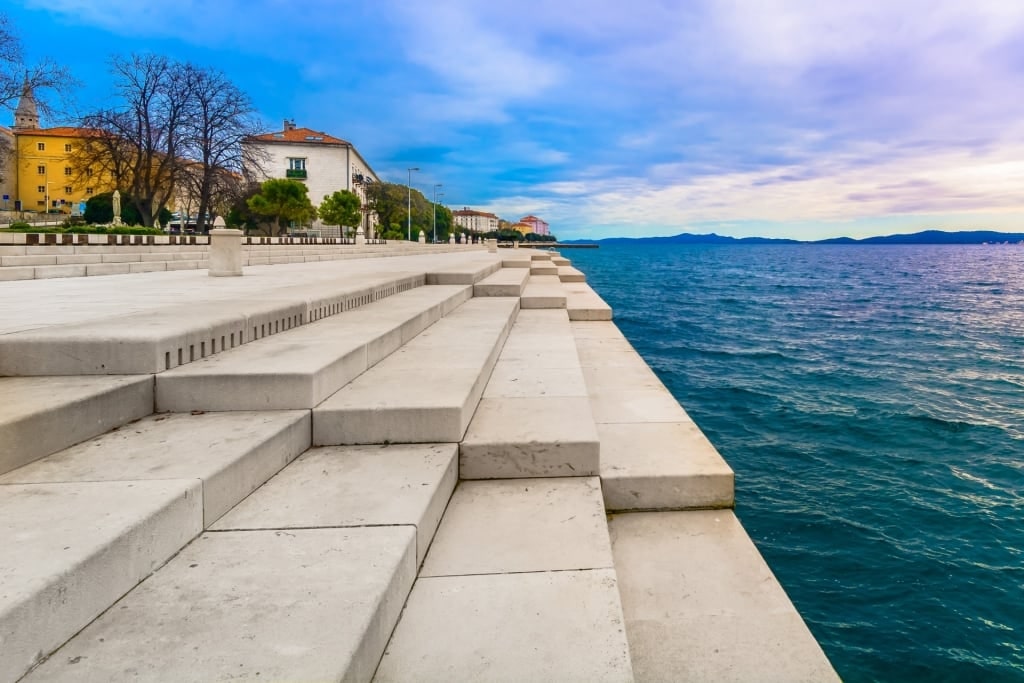
Sea Organ, Zadar
One of the best things to do in Croatia is to visit Zadar’s Sea Organ. Located on the city’s waterfront, it’s a contemporary installation loved by all. Air is forced through a series of underwater pipes as the waves slosh against the waterfront, creating a series of melodic whistles and sighs. If a ferry passes, the sounds become more intense.
Sit on the stone benches that conceal the pipes and listen to nature’s own music. This is a wonderful place to unwind with an ice cream on a hot day, cooling your feet in the water.
Read: Romantic Places to See on a Honeymoon in Croatia

Banje Beach, Dubrovnik
Are you tempted by Croatia’s history and spectacular scenery? Browse our cruises to Croatia and discover this enchanting European country for yourself.



